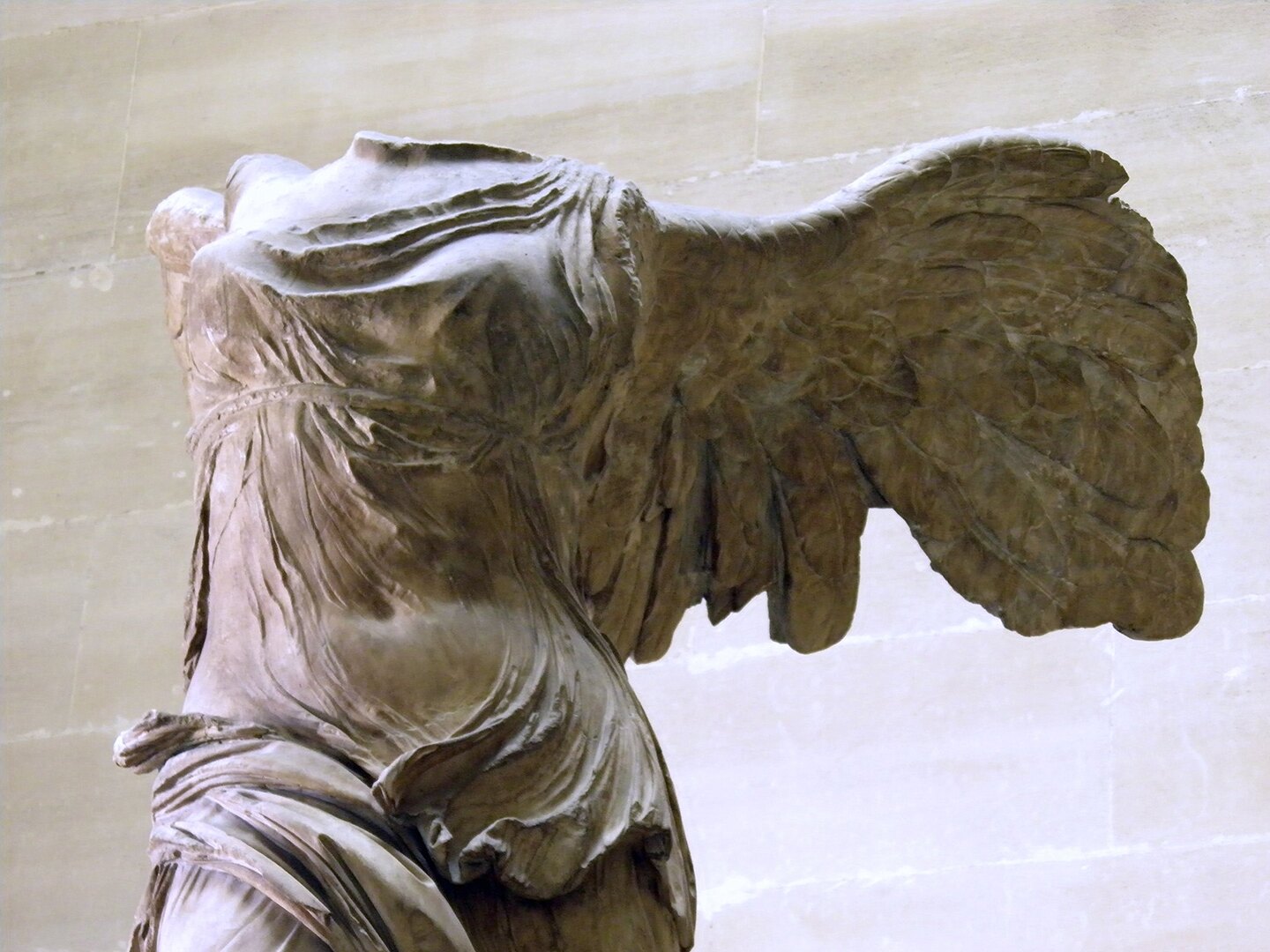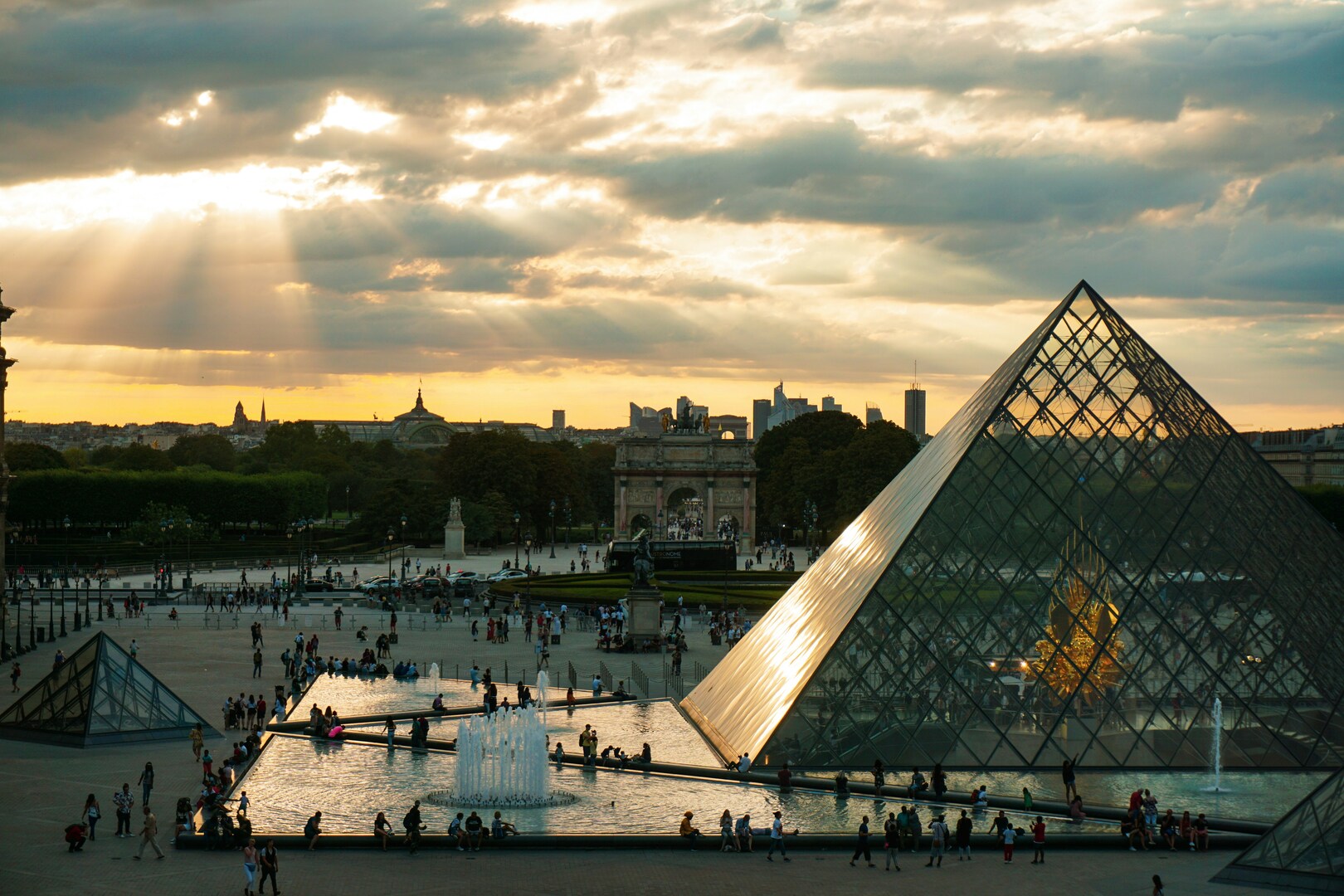The triumphant goddess Nike, captured in marble at the moment of victory, standing majestically at the top of the Louvre's grand staircase

The Winged Victory of Samothrace is one of the most dramatic and dynamic sculptures from ancient Greece. Created around 200-190 BCE during the Hellenistic period, this masterpiece depicts Nike, the goddess of victory, alighting on the prow of a ship after a naval battle.
Standing over 11 feet tall on a reconstructed base that mimics the prow of an ancient warship, the sculpture captures a moment of triumphant arrival. The goddess's wings are spread wide, her drapery billows dramatically in the wind, and her forward momentum creates an incredible sense of movement and energy that was revolutionary for ancient sculpture.
The Winged Victory was discovered in 1863 on the Greek island of Samothrace by French archaeologist Charles Champoiseau. It was likely created to commemorate a naval victory, possibly that of Rhodes over Antiochus III in 190 BCE. Since arriving at the Louvre in 1884, it has been displayed at the top of the Daru staircase, where its commanding presence welcomes visitors to the ancient art collections.

The Winged Victory's story began in 1863 when French diplomat and archaeologist Charles Champoiseau was excavating the Sanctuary of the Great Gods on the island of Samothrace. He discovered hundreds of marble fragments scattered across the hillside, including the statue's torso, wings, and parts of the ship.
The sculpture had been deliberately smashed in antiquity, likely during early Christian times when pagan monuments were destroyed. Over the centuries, the pieces had been buried and partially exposed by erosion. Champoiseau's team carefully collected all the fragments they could find and transported them to Paris.
Upon arrival at the Louvre, the statue underwent extensive restoration. The missing head and arms were never found, but the existing pieces were reassembled with the help of plaster casts to fill gaps. The dramatic ship-shaped base was reconstructed based on descriptions from ancient texts and similar monuments. Today, the Winged Victory stands as a testament to both ancient artistic genius and modern restoration expertise.

The Winged Victory's placement at the top of the grand Daru staircase is intentional - it creates a powerful first impression as you ascend toward the ancient collections. Take time to view it from different levels of the staircase to appreciate how the perspective changes the sculpture's dynamic presence.

Professional guide showcasing Mona Lisa, Venus de Milo, and Coronation of Napoleon with reserved access and headsets included

Fast-track entry with reserved time slot to explore Winged Victory and 35,000 artworks at your own pace